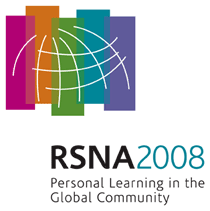
Abstract Archives of the RSNA, 2008
LL-VI4238-H02
Assessment of Renal Vasoconstriction in Vivo after Intraarterial Administration of the Isosmotic Contrast Medium Iodixanol Compared to the Low-osmotic Contrast Medium Iopamidol
Scientific Posters
Presented on December 2, 2008
Presented as part of LL-VI-H: Vascular/Interventional
Marcus Treitl MD, Presenter: Nothing to Disclose
Christoph Degenhart, Abstract Co-Author: Nothing to Disclose
Stefan Wirth MD, Abstract Co-Author: Nothing to Disclose
Maximilian F. Reiser MD, Abstract Co-Author: Nothing to Disclose
Low-osmotic contrast media (LOCM) such as iopamidol are known to increase the renal resistance index (RRI). The aim of our study was to evaluate in vivo the different effects of intra-arterial administration of LOCM in comparison to isosmolar contrast media (IOCM) such as iodixanol on the human RRI.
20 patients (16 m, 4 f; 66 yrs on average) with normal renal function (mean creatinine 1.0 mg/dl) had digital subtraction angiography (DSA) of the abdominal and lower limb arteries. 10 patients received LOCM, and 10 patients IOCM (150 ml on average, 20 ml/sec). The RRI was assessed by an experienced nephrologist with duplex ultrasound from 15 min before until 30 min after the first injection with delays of 1 to 5 min. The basic value of the RRI and differential RRI were calculated.
The basic value of the RRI was 0.69 in the LOCM group and 0.71 in the IOCM group. After LOCM a significant increase of the RRI to 0.73 on average (p ≤ 0.001) 2 min after the first injection was found, whereas IOCM did not result in a significant change of the RRI (RRI remained 0.71 on average, p ≥ 0.1). In the LOCM group, the RRI returned to the basic value after 30 min (± 2.3 min).
Intra-arterial administration of IOCM had no influence on renal vascular resistance as expressed by the RRI, unlike LOCM, which induced a highly significant increase of RRI for up to 30 min.
Our data support the thesis that isosmotic contrast media have a significantly lower nephrotoxic potential than conventional low-osmotic contrast media.
Treitl, M,
Degenhart, C,
Wirth, S,
Reiser, M,
Assessment of Renal Vasoconstriction in Vivo after Intraarterial Administration of the Isosmotic Contrast Medium Iodixanol Compared to the Low-osmotic Contrast Medium Iopamidol. Radiological Society of North America 2008 Scientific Assembly and Annual Meeting, February 18 - February 20, 2008 ,Chicago IL.
http://archive.rsna.org/2008/6017883.html

